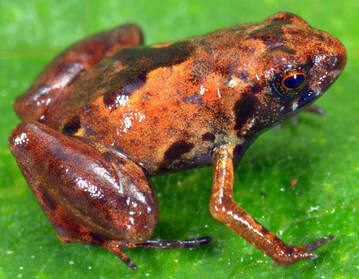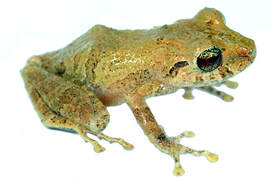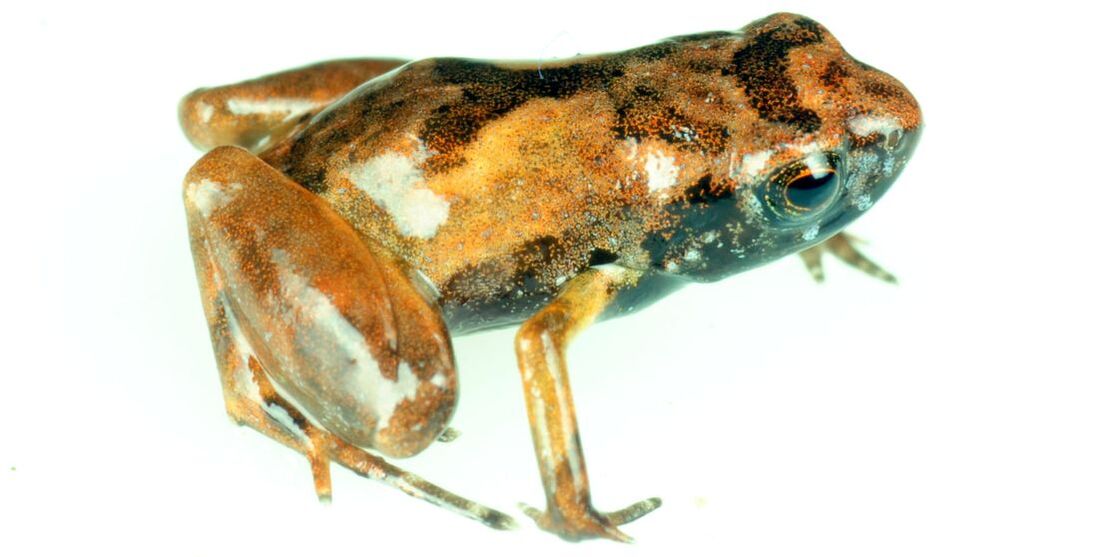Candidates should have a PhD and demonstrated record of publications. Starting salary for the position is $50k for one year (+ health benefits), with the possibility to apply for an internal Postdoc fellowship in Spring 2020. The position will be based in the Catenazzi Lab, in the Department of Biological Sciences at Florida International University in Miami (https://biology.fiu.edu/). Florida International University is classified by Carnegie as a R1: Doctoral Universities - Highest Research Activity and recognized as a Carnegie engaged university. If interested, please email [email protected] and attach a single PDF that includes a 1-page cover letter explaining research interests and experience, a CV, and a list of three references by September 30th.
|
The Catenazzi Lab at Florida International University (https://www.catenazzilab.org/) is looking to hire a post-doctoral researcher to work on multiple projects related to amphibian biodiversity and conservation. Our lab pursues several lines of research including amphibian taxonomy, biogeography, conservation genetics, disease ecology and ecological physiology. The post-doc will lead and collaborate in data analysis, modeling efforts, preparation of manuscripts and proposals based on existing data sets and samples. The position offers opportunities for mentoring undergraduate and graduate students at an institution with a large proportion of students under-represented in STEM.
Candidates should have a PhD and demonstrated record of publications. Starting salary for the position is $50k for one year (+ health benefits), with the possibility to apply for an internal Postdoc fellowship in Spring 2020. The position will be based in the Catenazzi Lab, in the Department of Biological Sciences at Florida International University in Miami (https://biology.fiu.edu/). Florida International University is classified by Carnegie as a R1: Doctoral Universities - Highest Research Activity and recognized as a Carnegie engaged university. If interested, please email [email protected] and attach a single PDF that includes a 1-page cover letter explaining research interests and experience, a CV, and a list of three references by September 30th.
0 Comments
Along with our collaborators Roy Santa Cruz and Evaristo López Tejeda from the Universidad Nacional de San Agustín de Arequipa, and Rudolf von May, Courtney Whitcher and Daniel Rabosky the University of Michigan, we describe a new species of minute leaf-litter frog, Noblella losamigos. The description appeared today in a special issue of the journal Diversity. The new species has a snout-vent length of 9.0-13.6 mm (females are larger than males) and is distributed along a wide elevational range, from 200 to nearly 1500 m asl. Among species of Noblella, it is the only species with a distribution in both lowland Amazon and montane forests of the Amazonian Andes. Specifically, the new species is known to occur at the Los Amigos Biological Station, Madre de Dios, operated by Conservacion Amazonica, and at the Cock of the Rock Biological Station, Cusco, owned and operated by Peru Verde. It has also been found at intermediate elevations.  Similarly to the other species in the genus Noblella, the new species is among the smallest anurans. Small size is a common trait of many leaf-litter frogs, as seen in other species of frogs in the same family (i.e., Bryophryne, Psychrophrynella, etc.), as well as species in other families, such as the tiny Brachycephalus of the Mata Atlantica, or the three species of Mini (Mini ature, Mini mum, and Mini scule) from Madagascar, suggesting similar selective pressure may be driving convergent evolution to small size in the leaf litter environment.  A new collaboration published in Plos One and led by Dr. Rudolf von May documents variation in thermal traits for nearly 60 species of frogs in a diverse lowland Amazonian community. There is a growing interest in investigating the vulnerability of tropical organisms to climate warming, yet little information is available for most species. Lowland species are thought to be at risk because they live in environments that are already hot. We found substantial variation in tolerance to heat among species. Some species, such as the Pristimantis ockendeni of the photo, are very sensitive to temperatures just above 30°C, whereas most treefrogs and all narrow mouthed frogs (Microhylidae) tolerate much warmer temperatures. In addition to the effects of phylogeny, we assessed the contribution of life history traits and found that both critical thermal maxima and minima were correlated with species’ body size and microhabitat use. We included examination of critical thermal minima because our study system in southern Peru is exposed to cold fronts, which cause temperatures in these lowland Amazon forests to go as low as 10°C. Our data suggest that thermal physiological traits in lowland frogs are evolutionarily labile and exhibit similar rates of thermal physiological change.
|
Archives
June 2024
CATENAZZI LABNews from the lab Categories |

 RSS Feed
RSS Feed